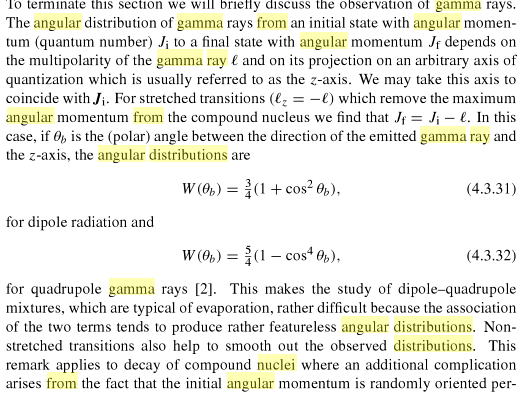Anna and Floris have given excellent descriptions of how the photon emission depends on the orientation of the nucleus, however there is another aspect of the question that I think is worth mentioning.
If you conside an isolated nucleus, e.g. no magnetic field, then it will be in a suerposition of all possible orientations so overall the system is spherically symmetric. When the gamma ray photon is emitted it will be in a superposition of all possible directions preserving this spherical symmetry. When we interact with the photon by detecting it the superposition will collapse into a specific photon momentum state, and therefore a specific momentum state for the nucleus it came from. Since the system was originally spherically symmetric the probability of measuring the photon is the same in all directions.
If you apply a magnetic field then you break the spherical symmetry, typically down to an axial symmetry. In this case the probability of measuring the photon will no longer be spherically symmetric. As Anna and Floris have said, it will be a complicated function of the nuclear structure. However we would still expect the probability of detection to be axially symmetric.

